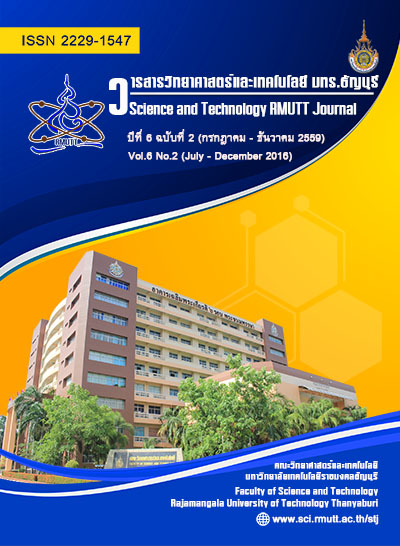Rubber arm with fluid system for venipuncture training, new model in clinical skills tutors
Main Article Content
Abstract
The newly developed artificial arm allows puncture practice with an arm model that has similar touch to human arms, providing effective training environment for blood drawing. The rubber arm (RA) with a fluid system for venipuncture which duplicates the 3 veins of the human arm as closely as innovative technology allows. The venous system simplifies setup with only one internal fluid box and pump supplying artificial blood to all veins simultaneously. The antecubital fossa includes the median cephalic, median basilic, and median cubital veins in the rubber arm. The Rubber arm with fluid system was developed by integrating five-degrees. Subjective responses such as perception of the RA and perceived fall were measured by questionnaires. Experiment 1 shows strong agreement and agreement in virtual arm (94%) sized (93%) and color (63%). In experiment 2, 99.9 % were able to perfect the technique of venipuncture; to draw blood from veins. This research investigated the possibility of the rubber arm fluid system using matched or mismatched medical science students of venipuncture training . It can help with confidence and understanding the steps in the first draw after using this model.
Article Details
References
N. J. Jebbin and J. M. Adotey, “An audit of basic practical skills acquisition of final year medical students in a Nigerian medical school,” Ann. Afr. Med., vol. 11, no. 1, pp. 42–45, Mar. 2012.
G. Lima-Oliveira, G. Lippi, G. L. Salvagno, M. D. R. Campelo, K. S. A. Tajra, F. dos Santos Gomes, C. D. Valentim, S. J. C. Romano, G. Picheth, and G. C. Guidi, “A new device to relieve venipuncture pain can affect haematology test results,” Blood Transfus. Trasfus. Sangue, vol. 12 Suppl 1, pp. s6–10, Jan. 2014.
A. Chen, K. Nikitczuk, J. Nikitczuk, T. Maguire, and M. Yarmush, “Portable robot for autonomous venipuncture using 3D near infrared image guidance,” Technology, vol. 1, no. 1, pp. 72–87, Sep. 2013.
WHO Guidelines on Drawing Blood: Best Practices in Phlebotomy. Geneva: World Health Organization, 2010.
C. A. Troianos, G. S. Hartman, K. E. Glas, N. J. Skubas, R. T. Eberhardt, J. D. Walker, S. T. Reeves, and Councils on Intraoperative Echocardiography and Vascular Ultrasound of the American Society of Echocardiography, “Guidelines for performing ultrasound guided vascular cannulation: recommendations of the American Society of Echocardiography and the Society of Cardiovascular Anesthesiologists,” J. Am. Soc. Echocardiogr. Off. Publ. Am. Soc. Echocardiogr., vol. 24, no. 12, pp. 1291–1318, Dec. 2011.
NASCO, “Injectable training arm LF00698 instruction manual,” 2001. [Online]. Available: http://www.worldpoint.com/PageFiles/132/Instructional%20Manuals/IV%20and%20Injection%20Simulators/IV698_Venipuncture%20and%20Injection%20Training%20Arm.pdf. [Accessed: 17-Jan-2016].
K. H. Kim, E. J. Byun, and E. H. Oh, “Ultrasonographic findings of superficial radial nerve and cephalic vein,” Ann. Rehabil. Med., vol. 38, no. 1, pp. 52–56, Feb. 2014.
G. Lippi, P. Avanzini, R. Aloe, and G. Cervellin, “Blood collection from intravenous lines: is one drawing site better than others?,” Lab. Med., vol. 45, no. 2, pp. 172–175, 2014.
M. Ichimura, S. Sasaki, M. Mori, and T. Ogino, “Tapping but not massage enhances vasodilation and improves venous palpation of cutaneous veins,” Acta Med. Okayama, vol. 69, no. 2, pp. 79–85, 2015.
C. Fujii, “Clarification of the characteristics of needle-tip movement during vacuum venipuncture to improve safety,” Vasc. Health Risk Manag., vol. 9, pp. 381–390, 2013.
K. Jaschke, D. Brown, A. Clark, S. Doull, A. English, N. Hoover, P. Jones, D. Klamm, C. Odom, B. Primrose, K. Sollars, and M. Ebberts, “Speed of blood withdrawal and accurate measurement of oxygen content in mixed venous blood,” Am. J. Crit. Care Off. Publ. Am. Assoc. Crit.-Care Nurses, vol. 23, no. 6, pp. 486–493, Nov. 2014.
D. Milutinović, I. Andrijević, M. Ličina, and L. Andrijević, “Confidence level in venipuncture and knowledge on causes of in vitro hemolysis among healthcare professionals,” Biochem. Medica, vol. 25, no. 3, pp. 401–409, 2015.
S. Sasaki, N. Murakami, Y. Matsumura, M. Ichimura, and M. Mori, “Relationship between tourniquet pressure and a cross-section area of superficial vein of forearm,” Acta Med. Okayama, vol. 66, no. 1, pp. 67–71, 2012.
A. P. Morrison, M. J. Tanasijevic, E. M. Goonan, M. M. Lobo, M. M. Bates, S. R. Lipsitz, D. W. Bates, and S. E. F. Melanson, “Reduction in specimen labeling errors after implementation of a positive patient identification system in phlebotomy,” Am. J. Clin. Pathol., vol. 133, no. 6, pp. 870–877, Jun. 2010.


